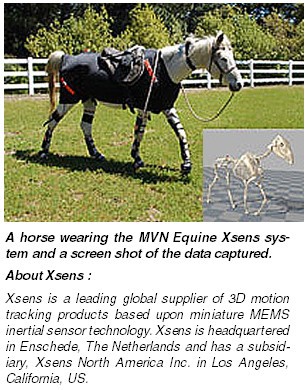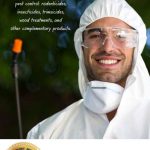Sports, Health, Movies & The Military
A team at Sunderland University in the north-east of England are using a bodysuit – a piece of innovative clothing – to try and improve how sports activities are undertaken. This could catch the eye of medical ultrasonic cleaning experts who are hoping to find a way of bringing together traditional medical imaging strategies with more advanced 3D modelling methods.
| An innovative body suit armed with a camera-less measurement system and a range of tracking sensors is helping researchers at Sunderland University develop improvements in a range of sporting activities. |
 An innovative body suit which is proving to be an invaluable tool for movie makers and the military is now helping researchers in the North East of England develop improvements in a wide range of sporting activities and healthcare.
An innovative body suit which is proving to be an invaluable tool for movie makers and the military is now helping researchers in the North East of England develop improvements in a wide range of sporting activities and healthcare.
The MNV Biomech is a 3D human kinematic, camera-less measurement system, with integrated small tracking sensors placed on the joints, which can communicate wirelessly with a computer to capture every twist and turn of the body and is displayed as an avatar and a 3D set of data on screen.
From riding a horse with the correct saddle to helping nurses lift their patients safely into a hospital bed without straining themselves; these are just two of the areas the University of Sunderland’s researchers and students are now exploring since investing in the hi-tech suit, developed by Dutch company Xsens.
 Previously used to create the animated alien in the science fiction movie ‘Paul’, the suit works with sensors and can be used in most environments, both internal and external. Previous technology at the university meant any 3D motion capture data had to be recorded via fixed cameras in a lab.
Previously used to create the animated alien in the science fiction movie ‘Paul’, the suit works with sensors and can be used in most environments, both internal and external. Previous technology at the university meant any 3D motion capture data had to be recorded via fixed cameras in a lab.
But now researchers are making use of the suit, one of the first universities in the UK to do so, in areas such as biomechanics, sports science, nurse training, rehabilitation and ergonomics.
Dr Bob Hogg, Senior Lecturer in Sports Technology, said: “The suit allows us to take 3D motion capture out of the lab and into the real world.
“Due to the cost, the technology has predominantly been used in the military and entertainment industries, but the university believes the investment in this new piece of equipment will prove invaluable to our research projects as it has endless possibilities, which really could make a life-changing difference to people’s lives, professionally and personally.”
 He added: “Already the suit is being used to help improve the efficiency of dressage riders, investigate lumbar spine issues and we have just put the suit on a trampolinist!
He added: “Already the suit is being used to help improve the efficiency of dressage riders, investigate lumbar spine issues and we have just put the suit on a trampolinist!
“One of our Professional Doctorate students, Anne Bondi is involved in a major project researching saddle design and its link to the welfare, safety and performance of professional horse riders, which includes disabled riders.
“It’s one of the first projects of its kind and is being run in conjunction with The Saddle Research Trust and is using the suit to measure areas such as rider stability, the horse’s welfare and creating custom-made saddles.
“As part of our new MSc. Programme we will be looking into improving the efficiency for wheelchair athletes, using the suit to measure biomechanical efficiency and power output, which could have benefits for their health and professional performance. The research could also be extended to create better designs for NHS wheelchair users with specific health needs.
“Another area where we are sharing our equipment and knowledge is with our post-registration nurses; where we hope to improve their postural positions when lifting patients, which adds a health and safety element to the research.”
 Each sensor on the suit consists of three components: accelerometers – which measure acceleration, magnetometers to give a postural position relative to the magnetic field of the earth, and a gyroscope for measuring orientation. They give information on each of the joints and the body segments connecting them, and how they’re moving relative to each other and in 3D space. This then appears as an avatar on screen.
Each sensor on the suit consists of three components: accelerometers – which measure acceleration, magnetometers to give a postural position relative to the magnetic field of the earth, and a gyroscope for measuring orientation. They give information on each of the joints and the body segments connecting them, and how they’re moving relative to each other and in 3D space. This then appears as an avatar on screen.
Dr Hogg said: “The data is available for every single joint and segment, so there are literally tens of thousands of data points, the main problem is analysing it all!”
Dr Hogg added that the university is keen to work with both the public sector and private companies who may wish to utilise the suit for their own research projects.
The suit has also attracted the attention of Dr Ian Thompson, a research chemist and husband of Paralympic athlete Tanni Grey-Thompson, who is interested in linking up with the university.
He said: “We have used video analysis systems in the past for investigation of motion analysis in wheelchair racing, but the MVN Xsens system offers significant benefits in real time data presentation and in the detail of parameters that can be analysed. I am really looking forward to investigating wheelchair racing technique with this tool.”
